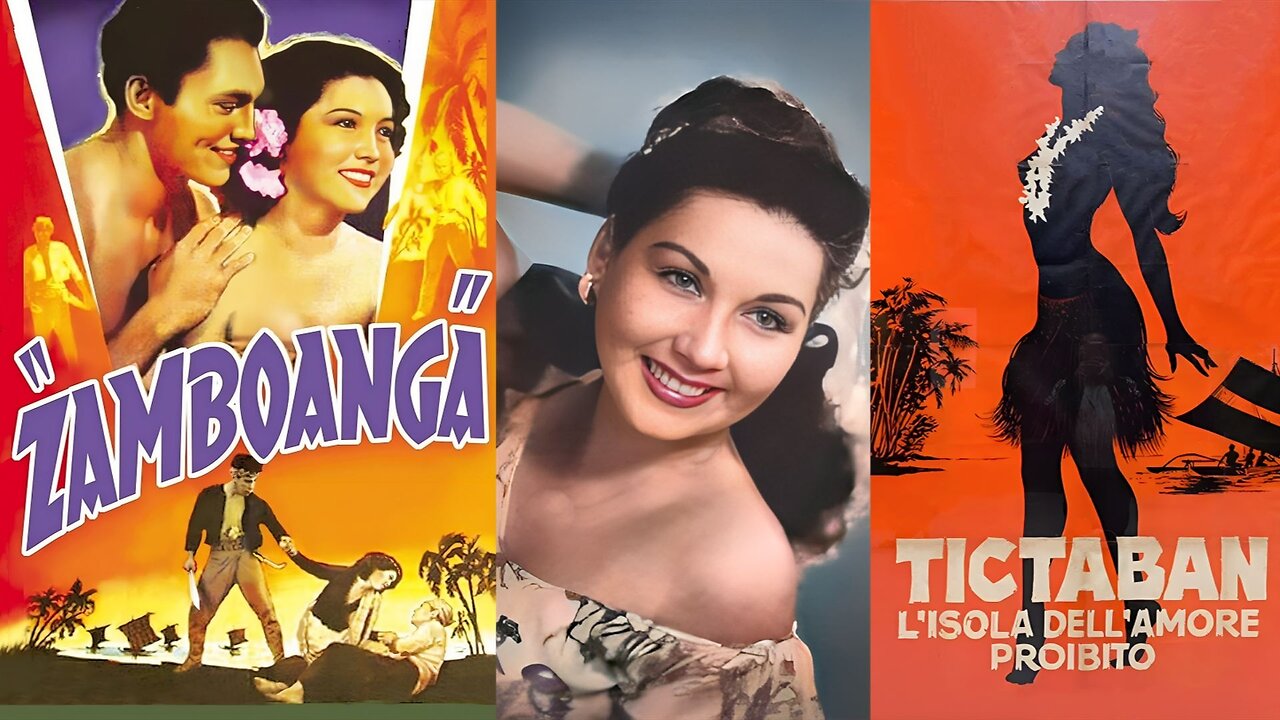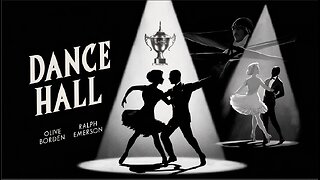Premium Only Content

ZAMBOANGA aka Tictaban (1937) Fernando Poe & Rosa Del Rosario | Drama, Romance | B&W
Zamboanga is a 1937 Philippine drama film directed by Eduardo de Castro starring Fernando Poe and Rosa del Rosario and was produced by Filippine Films. It premiered in the United States on 10 December 1937. It was considered a "lost film" until the early 2000s, when an original copy of the film was retrieved in Finland.
SYNOPSIS
Tells the tale of a seafaring tribe and its conquests.
Zamboanga centers around a sea-faring tribe ruled by Datu Tanbuong, which relied on pearl farming. Danao (Fernando Poe) is betrothed to the datu's granddaughter, Minda (Rosa del Rosario).
Hadji Razul, a leader of pirate Moro tribe, kidnaps Minda which led to a tribal war between the groups of Tanbuong and Razul. The conflict ends with Danao rescuing Minda and the demise of Razul. Danao and Minda marry and sail into the sunset.
CAST & CREW
Fernando Poe
Rosa del Rosario
Directed by Eduardo de Castro
Cinematography William H. Jansen
Edited by Ralph Dixon[1]
Music by Edward Kilenyi Sr.
Production company Filippine Films
Release date 10 December 1937 (United States)
Running time 65 minutes
Country Philippines
Languages Tagalog, Tausug
NOTES
Zamboanga was produced for the United States market, where films with "exotic" setting were in demand at the time. It premiered in San Diego, California on 10 December 1937[3] and was also screened in New York.[2] It was also reportedly screened in Europe, in countries such as Finland, France, and Spain.[4] It was also screened in the Philippines at the Lyric Theater in Escolta, Manila after its premier in the United States.[5]
Zamboanga runs for at least 65 minutes and was originally filmed in the Tausug and Tagalog languages. It was refilmed in English, and was subtitled for Non-English speaking audiences.
The film was believed to be a "lost film" in the Philippines, until Nick Deocampo found an original copy in the United States Library of Congress. The copy itself, which in turn came from Finland, was repatriated back to the Philippines and was screened in the country as part of the 2004 Pelikula at Lipunan film festival. In 2017, the Film Development Council of the Philippines did a restoration on Zamboanga and keeps a copy of the film in its archive.
In the 1930s, Zamboanga was described by Hollywood director Frank Capra as "the most exciting and beautiful picture of native life" he have ever seen.
Filipino musicologist José Buenconsejo characterized Zamboanga as Orientalist. He note several inaccuracies with the actual local culture of Mindanao, the trope of abduction of women from the seraglio (a narrative device popular in Europe in the 18th century in stories involving the Ottomans), and the portrayal of the Moro, particularly the antagonist Hadji's side, as civilized yet still barbaric.
He also noted the authentic use of kulintang in the film but was critical of the incorporation of soft Javanese music with kulintang accompanying the scene depicting entertainment at Hadji's court. Buenconsejo also pointed out the usage of "Hawaiian" sound to establish the film's tropical setting. For the filming technique he praised the underwater shooting which he finds more advanced than Zamboanga's contemporaries Bird of Paradise and Tabu.
-
 59:13
59:13
Lost n Found Films
12 hours agoDANCE HALL (1929) Olive Borden, Arthur Lake & Ralph Emerson | Comedy, Drama | B&W | Classic Film
50 -
 56:28
56:28
Glenn Greenwald
13 hours agoDocumentary Exposing Repression in West Bank Wins at Oscars; Free Speech Lawyer Jenin Younes on Double Standards for Israel's Critics | SYSTEM UPDATE #416
121K99 -
 1:03:34
1:03:34
Donald Trump Jr.
15 hours agoZelensky Overplays His Hand, More Trump Wins, Plus Interview with Joe Bastardi | Triggered Ep.221
190K145 -
 1:13:16
1:13:16
We Like Shooting
23 hours ago $7.41 earnedDouble Tap 399 (Gun Podcast)
69.7K2 -
 1:00:20
1:00:20
The Tom Renz Show
1 day agoTrump Schools Zelensky, The Epstein Files FAIL, & What RFK Will Mean for Cancer
80.9K27 -
 42:47
42:47
Kimberly Guilfoyle
17 hours agoThe Trump effect: More Major Investment, Plus America First at Home & Abroad. Live w/Ned Ryun & Brett Tolman | Ep. 201
155K40 -
 1:29:23
1:29:23
Redacted News
15 hours agoWW3 ALERT! Europe pushes for war against Russia as Trump pushes peace and cutting off Zelensky
186K306 -
 57:56
57:56
Candace Show Podcast
19 hours agoHarvey Speaks: The Project Runway Production | Ep 1
174K108 -
 56:31
56:31
LFA TV
1 day agoEurope’s Relationship With America Is Over | TRUMPET DAILY 3.3.25 7PM
56.4K11 -
 2:04:45
2:04:45
Quite Frankly
17 hours ago"European Deth Pact, Blackout Data Breach, Epstein" ft. Jason Bermas 3/3/25
54.9K24